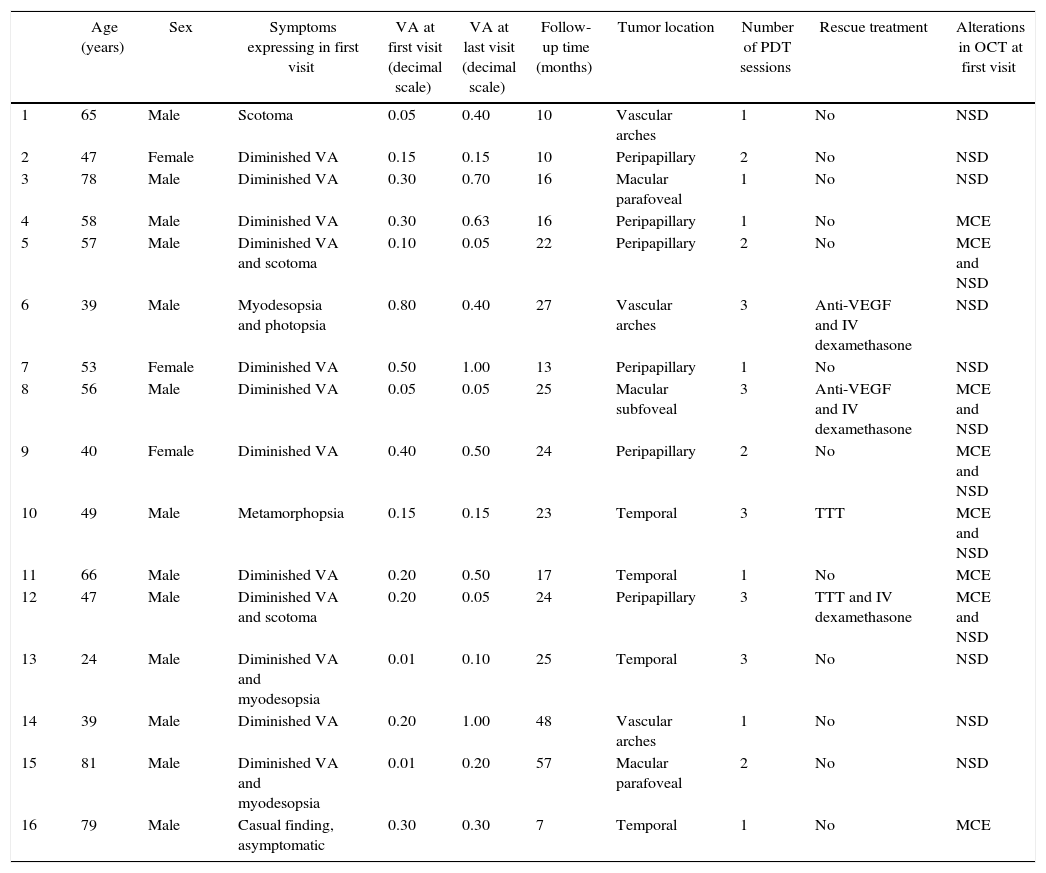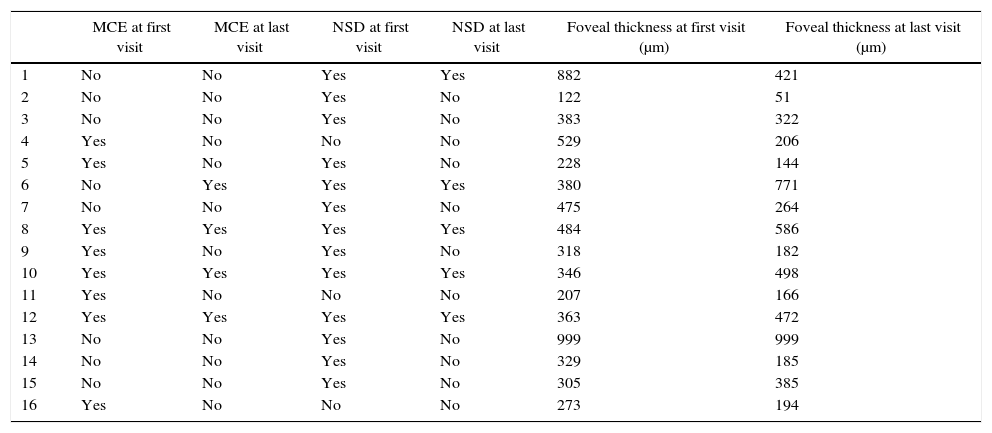To study the effectiveness and limitations of photodynamic therapy (PDT) as treatment of choice in patients with symptomatic circumscribed choroidal hemangioma.
MethodsA retrospective study was conducted on 16 patients (13 men and 3 women, with mean age of 54.88 years) with circumscribed choroidal hemangioma, who attended our center and were treated with PDT in the last 7 years.
ResultsAll patients had circumscribed choroidal hemangioma, which caused a decrease in visual acuity (VA) secondary to the presence of intraretinal microcystic edema or neurosensory detachment. The mean initial VA was 0.23, and the final mean VA after performing PDT was 0.38 (all the VA were measured in decimal scale). It should be noted that patients needed a mean of 1.69 PDT sessions. Three of the patients needed rescue treatment with trans-pupillary thermotherapy, intravitreal injection of anti-vascular endothelial growth factor (ranibizumab, aflibercept) or a dexamethasone intravitreal implant (Ozurdex®). The indication for a change of treatment was the persistence of intraretinal microcystic edema and/or neurosensory detachment (or incomplete resolution) after 3 PDT sessions. As overall results, 62.5% of patients evolved into anatomical and functional (increase in AV or stability) resolution.
ConclusionsPDT is a straight forward and fast procedure, with a good anatomical and functional response, causing minimal damage to adjacent vessels.
Estudiar la eficacia y las limitaciones de la terapia fotodinámica (TFD) como tratamiento de primera elección en pacientes con hemangioma coroideo circunscrito sintomático.
MétodosSe realizó un estudio retrospectivo de 16 pacientes (13 varones y 3 mujeres, con una media de edad de 54,88 años) con hemangioma coroideo circunscrito visitados en nuestro centro y tratados con TFD en los últimos 7 años.
ResultadosTodos los pacientes presentaban hemangioma coroideo circunscrito, que ocasionaba sintomatología secundaria a la presencia de edema microquístico intrarretiniano o desprendimiento neurosensorial. La agudeza visual (AV) media inicial del grupo era de 0,23 y la AV media posterior a la realización de TFD fue de 0,38 (todas las AV fueron medidas en escala decimal). Cabe destacar que los pacientes necesitaron una media de 1,69 sesiones de TFD. Tres de los pacientes necesitaron un tratamiento de rescate con termoterapia transpupilar, inyección intravítrea de antifactor de crecimiento endotelial vascular (ranibizumab, aflibercept) o implante intravítreo de dexametasona (Ozurdex®). La indicación de cambio de tratamiento fue la persistencia de edema microquístico intrarretiniano y/o desprendimiento neurosensorial (o su resolución incompleta) tras 3 sesiones de TFD. Como resultados generales, destacamos que un 62,5% de los pacientes evolucionó hacia la resolución anatómica y funcional (incremento de AV o estabilidad).
ConclusionesLa TFD es un procedimiento dirigido y rápido, con buena respuesta anatómica y funcional, que ocasiona un mínimo daño a los vasos adyacentes a la lesión.











